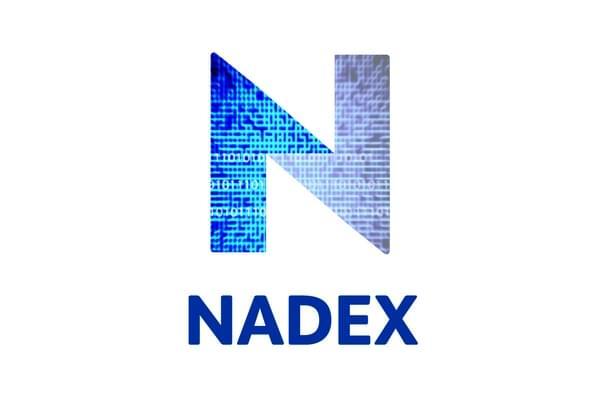
It is easy to use, generally accepted and trusted, and it follows the natural physical flow of inventory. FIFO is considered to be the more transparent and trusted method of calculating cost of goods sold, over LIFO. Our sales engineers are experts in automatic asset tracking, tagging and identification,a nd can answer all your questions. There are usually more inventory layers to track in a LIFO system, since the oldest layers can potentially remain in the system for years. There are usually fewer inventory layers to track in a FIFO system, since the oldest layers are continually used up. The IRS allows the use of LIFO, but if you use it for any subsidiary, you must also use it for all parts of the reporting entity.
LIFO vs. FIFO: Which Should You Use in 2023? – The Motley Fool
LIFO vs. FIFO: Which Should You Use in 2023?.
Posted: Wed, 18 May 2022 16:56:43 GMT [source]
A company’s recordkeeping must track the total cost of inventory items, and the units bought and sold. The store purchased shirts on March 5th and March 15th and sold some of the inventory on March 25th. The company’s bookkeeping total inventory cost is $13,100, and the cost is allocated to either the cost of goods sold balance or ending inventory. Two hundred fifty shirts are purchased, and 120 are sold, leaving 130 units in ending inventory.
LIFO vs. FIFO: What’s the difference?
It’s an estimate that is calculated by a variety of methods, each resulting in a different number. So, LIFO and FIFO do not reflect what has actually happened in a company’s bank account, rather, it’s just how they are reporting it. If costs are decreasing, the first items sold are the most expensive, so your cost of goods sold increases, you report fewer profits, and therefore pay a smaller amount of income taxes in the near term. If costs are https://online-accounting.net/ increasing, the last items sold are the most expensive, so your cost of goods sold increases, you report fewer profits, and therefore pay a smaller amount of income taxes in the near term. FIFO assumes that the oldest items in inventory are sold first, which means that the cost of goods sold is based on the higher cost of those older items. This can result in inflated profits and an inaccurate representation of the current cost of goods sold.

Once you understand what FIFO is and what it means for your business, it’s crucial to learn how it works. Ng offered an example of FIFO using real numbers to show the formula in action. Regardless of the price you paid for your wire, you chose to keep your selling price stable at $7 per spool of wire.
Key Differences Between LIFO and FIFO
Since the seafood company would never leave older inventory in stock to spoil, FIFO accurately reflects the company’s process of using the oldest inventory first in selling their goods. As a result, LIFO isn’t practical for many companies that sell perishable goods and doesn’t accurately reflect the logical production process of using the oldest inventory first. The average inventory method usually lands between the LIFO and FIFO method. For example, if LIFO results the lowest net income and the FIFO results in the highest net income, the average inventory method will usually end up between the two. The LIFO reserve is the amount by which a company’s taxable income has been deferred, as compared to the FIFO method. Assuming Ted kept his sales prices the same (which he did, in order to stay competitive), this means there was less profit for Ted’s Televisions by the end of the year.
When the company calculates its profits, it would use the most recent price of $35. In tax statements, it would appear that the company made a profit of only $15. On the other hand, manufacturers create products and must account for the material, labor, and overhead costs incurred to produce the units and store them in inventory for resale. FIFO is mostly recommended for businesses that deal in perishable products. The approach provides such ventures with a more accurate value of their profits and inventory. FIFO is not only suited for companies that deal with perishable items but also those that don’t fall under the category.
FIFO is better when it comes to comparing FIFO and LIFO accounting methods as it is more accurate because it assumes that older, less expensive items are typically sold first. FIFO, where older inventory items are sold first, requires less recordkeeping. In comparison, LIFO inventory the differences in wages payable & wages expense accounting requires more recordkeeping because it assumes the company will keep the older inventory items on hand for several years. We will use the example of a single business to show how to calculate the cost of goods sold using the FIFO and LIFO methods of inventory valuation.
Difference Between FIFO and LIFO
In general, both U.S. and international standards are moving away from LIFO. Some companies still use LIFO within the United States for inventory management but translate it to FIFO for tax reporting. Only a few large companies within the United States can still use LIFO for tax reporting. Because of the current discrepancy, however, U.S.-based companies that use LIFO must convert their statements to FIFO in their financial statement footnotes.
Compliance Campaign: COGS Cops Coming – Lexology
Compliance Campaign: COGS Cops Coming.
Posted: Mon, 14 Aug 2023 07:00:00 GMT [source]
As a result, FIFO can increase net income because inventory that might be several years old–which was acquired for a lower cost–is used to value COGS. However, the higher net income means the company would have a higher tax liability. The FIFO method assumes that the oldest inventory units are sold first, while the LIFO method assumes that the most recent inventory units are sold first. LIFO better matches current costs with revenue and provides a hedge against inflation. Finally, weighted average cost provides a clearer position of the costs of goods sold, as it takes into account all of the inventory units available for sale.
CMMS vs. EAM: Which One is Right for Your Business?
While tax implications are not the only determining factor when choosing between FIFO and LIFO inventory valuation methods, they should play a significant role in your decision. Professional solutions like TranZact can make your inventory valuation process smooth and easier by tracking inventory movements in real-time. TranZact also provides insightful inventory analysis with smart business dashboards for quick decision-making for business owners. A company might use the LIFO method for accounting purposes, even if it uses FIFO for inventory management purposes (i.e., for the actual storage, shelving, and sale of its merchandise). However, this does not preclude that same company from accounting for its merchandise with the LIFO method. FIFO and LIFO inventory valuations differ because each method makes a different assumption about the units sold.
However, in order for the cost of goods sold (COGS) calculation to work, both methods have to assume inventory is being sold in their intended orders. Last in, first out or LIFO, is a method of accounting for valuing inventory. This method is based on the assumption that the last item placed in the inventory will be sold out first, i.e. reverse chronological order will be followed in issuing inventory from the stores. Read out the given article to learn the differences between LIFO and FIFO method of inventory valuation. LIFO, is a form of inventory management wherein the product or material received last, is consumed first and thus the stock in hand, consist of earliest consignment. Generally speaking, FIFO is preferable in times of rising prices, so that the costs recorded are low, and income is higher.
FIFO often results in higher net income and higher inventory balances on the balance sheet. However, this results in higher tax liabilities and potentially higher future write-offs if that inventory becomes obsolete. In general, for companies trying to better match their sales with the actual movement of product, FIFO might be a better way to depict the movement of inventory.
Upon being called, the data of the function is stored in the stack and is removed upon return. They can perform entity addition and removal processes in constant time (O(1)). Some programming languages provide in-built queue support; for instance, the ‘queue’ interface in the Java library and the ‘queue’ templated class in the C++ Standard Template Library.
- So the inventory cost added to the stock today will equal the one year ago.
- FIFO states that if the bakery sold 200 loaves on Wednesday, the COGS (on the income statement) is $1 per loaf because that was the cost of each of the first loaves in inventory.
- FIFO leverages a queue-type data structure wherein the oldest element stays at the front, awaiting preferential processing.
Do you routinely analyze your companies, but don’t look at how they account for their inventory? For many companies, inventory represents a large, if not the largest, portion of their assets. Therefore, it is important that serious investors understand how to assess the inventory line item when comparing companies across industries or in their own portfolios. You can see how for Ted, the LIFO method may be more attractive than FIFO.
FIFO and LIFO Table
This means the value of inventory is minimized and the value of cost of goods sold is increased. This means taxable net income is lower under the LIFO method and the resulting tax liability is lower under the LIFO method. When sales are recorded using the FIFO method, the oldest inventory–that was acquired first–is used up first. FIFO leaves the newer, more expensive inventory in a rising-price environment, on the balance sheet.
Use QuickBooks Enterprise to account for inventory using less time and with more accuracy. QuickBooks allows you to use several inventory costing methods, and you can print reports to see the impact of labor, freight, insurance, and other costs. With QuickBooks Enterprise, you’ll know how much your inventory is worth so you can make real-time business decisions. Using FIFO simplifies the accounting process because the oldest items in inventory are assumed to be sold first. When Sterling uses FIFO, all of the $50 units are sold first, followed by the items at $54. FIFO assumes that cheaper items are sold first, generating a higher profit than LIFO.
